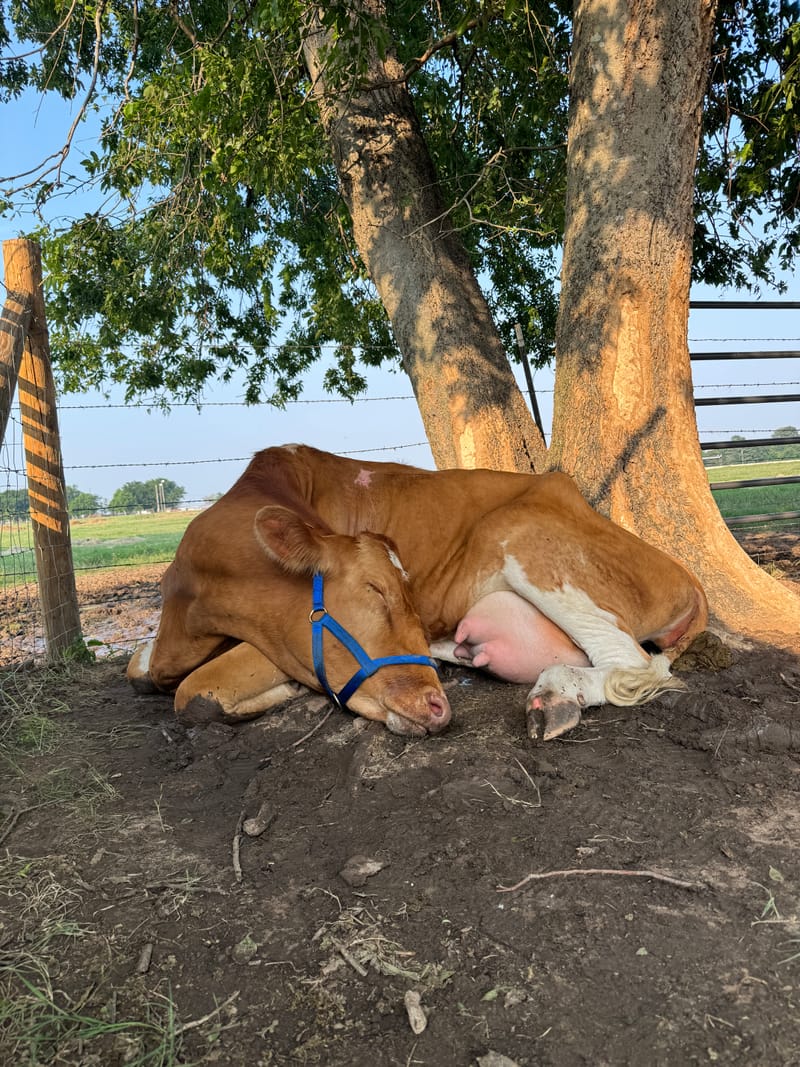Introduction
Ketosis is a metabolic disorder commonly affecting dairy cows in early lactation, potentially leading to a significant decrease in milk production, reduced fertility, and increased susceptibility to other health issues. Understanding how to prevent, detect, and treat ketosis is crucial for maintaining a healthy and productive dairy herd. In this comprehensive guide, we'll explore the ins and outs of managing ketosis in dairy cows.
Understanding Ketosis
What is Ketosis? Ketosis occurs when a cow's energy demand exceeds its intake, leading to excessive breakdown of body fat. This results in high levels of ketones in the blood, milk, and urine.
Causes of Ketosis
- Negative energy balance in early lactation
- Overconditioning during the dry period
- Sudden dietary changes
- Stress from calving or other health issues
Risk Factors
- High-producing cows
- Older cows (3rd lactation and beyond)
- Cows with a history of ketosis
- Twin pregnancies
Prevention Strategies
Proper Nutrition Management
- Maintain optimal body condition scores (BCS) during the dry period (aim for 3.0-3.5 on a 5-point scale)
- Provide a well-balanced transition diet 3-4 weeks pre-calving
- Ensure adequate feed bunk space to promote optimal dry matter intake
- Gradually increase energy density post-calving
Transition Cow Care
- Minimize stress during the transition period
- Ensure comfortable housing with adequate space
- Monitor feed intake closely
- Implement strategies to prevent other transition cow diseases (e.g., milk fever, displaced abomasum)
Body Condition Scoring
Regular body condition scoring can help identify cows at risk of ketosis:
- Score cows at dry-off, pre-calving, and post-calving
- Aim for minimal BCS loss in early lactation
- Adjust rations based on BCS trends in the herd
Early Detection
Clinical vs. Subclinical Ketosis
- Clinical ketosis: Visible symptoms such as decreased appetite, weight loss, and reduced milk production
- Subclinical ketosis: No visible symptoms, but elevated blood ketone levels
Signs and Symptoms to Watch For
- Decreased dry matter intake
- Rapid weight loss
- Reduced milk production
- Lethargy or depression
- Sweet, fruity breath odor (in severe cases)
On-Farm Testing Methods
- Milk ketone tests (e.g., Keto-Test strips)
- Urine ketone strips
- Blood ketone meters (e.g., Precision Xtra)
- Regular monitoring of milk production and components
Treatment Options
Conventional Treatments
- Oral propylene glycol (300-500 ml/day for 3-5 days)
- Intravenous dextrose solution (500 ml of 50% dextrose)
- Glucocorticoids (e.g., dexamethasone) to stimulate gluconeogenesis
- B-complex vitamins, especially B12 and niacin
Alternative Approaches
- Beet pulp as an energy-dense feed additive
- Alfalfa mash stimulates appetite and provides easily digestible nutrients
- Rumen-protected choline to support liver function
- Monensin to improve energy metabolism
When to Call the Vet
- If the cow is not responding to initial treatments
- In cases of severe clinical ketosis
- If you suspect concurrent health issues (e.g., displaced abomasum)
- For advice on adjusting herd-level management strategies
Long-term Management
Monitoring Milk Production
- Keep detailed records of daily milk production
- Watch for sudden drops in production, which may indicate subclinical ketosis
- Analyze milk components regularly, as fat-to-protein ratios can indicate energy balance status
Adjusting Feeding Strategies
- Fine-tune transition and early lactation rations based on herd performance
- Consider feeding strategies like multiple daily feed push-ups to encourage intake
- Evaluate forage quality regularly and adjust rations accordingly
Breeding Considerations
- Delay breeding for cows that experienced severe ketosis
- Monitor body condition closely before breeding
- Consider genetic selection for metabolic health traits
Conclusion
Effectively managing ketosis in dairy cows requires a proactive approach that combines prevention, early detection, and prompt treatment. By implementing sound nutritional strategies, regularly monitoring cow health, and acting quickly when issues arise, you can minimize the impact of ketosis on your herd.





